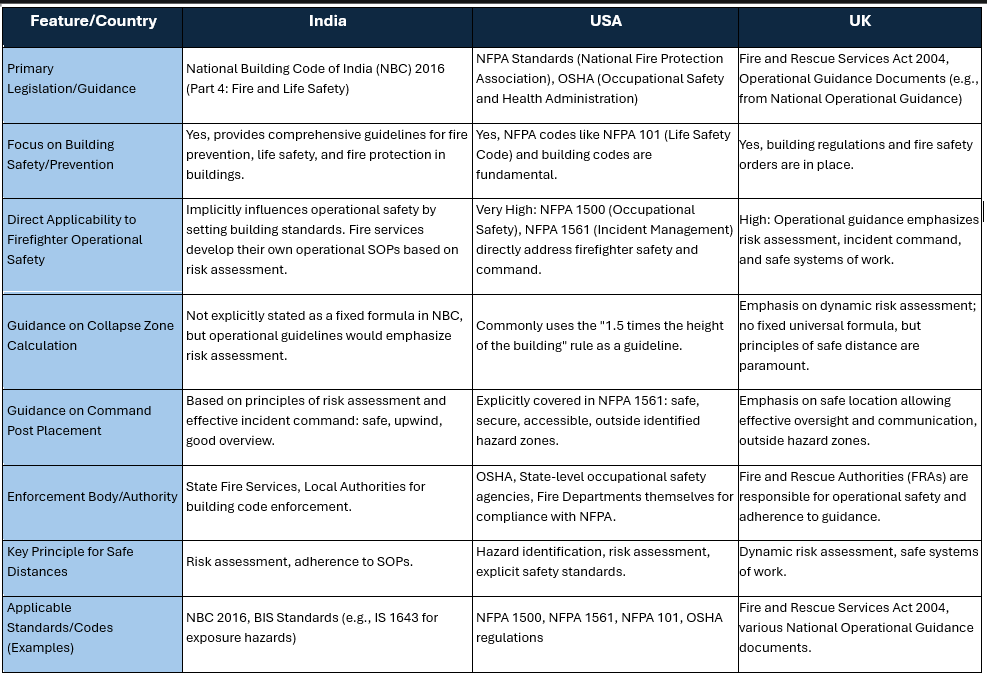🚨 Understanding the Collapse Zone: A Lifeline in Firefighting 🚨
The Plasco Building fire in Tehran on January 19, 2017, serves as a stark reminder of the devastating consequences when structural integrity fails during a blaze. This tragic event, which saw the 17-storey commercial building collapse after several hours of intense fire, claimed the lives of 16 brave firefighters and 6 civilians. The incident highlighted critical deficiencies in fire safety, building regulations, and emergency response, underscoring the paramount importance of understanding and managing collapse zones.
https://www.youtube.com/watch?v=Jf27GGZYT2s
What is a Collapse Zone? A collapse zone is the area around a burning or structurally compromised building where debris could fall if the structure fails. Entering this zone without proper precautions is an extreme risk for firefighters and other emergency personnel.
Why is it Crucial to Establish a Collapse Zone? Buildings can collapse in various ways – inward, outward, pancake, lean-to, or total collapse. Factors like the type of construction, fire duration and intensity, building materials, and the presence of hazardous materials all influence the risk and pattern of collapse. Establishing a collapse zone protects responders from falling debris, flying projectiles, and potential secondary collapses.
How to Calculate the Collapse Zone: While not an exact science, a commonly accepted guideline for establishing a minimum collapse zone is 1.5 times the height of the building. For example, if a building is 30 meters tall, the collapse zone should extend at least 45 meters from its perimeter. This provides a buffer for falling debris, which can travel a considerable distance.
Key Precautions to Be Taken:
- Continuous Structural Assessment: Constantly monitor the building for signs of structural compromise (e.g., bulging walls, cracks, smoke pushing through cracks, groaning noises).
- Establish and Maintain the Collapse Zone: Clearly demarcate and enforce the collapse zone, keeping all non-essential personnel and apparatus out.
- Strategic Apparatus Placement: Position fire apparatus outside the collapse zone to protect equipment and provide safe working areas.
- Accountability: Implement robust accountability systems to track all personnel on the fire ground, especially those operating near or within potential collapse zones.
- Ventilation and Water Application: Understand how ventilation strategies and heavy water application can impact structural stability.
- Utility Control: Secure utilities (gas, electricity, water) to prevent additional hazards.
- Incident Command System (ICS): Effective ICS is crucial for managing complex incidents involving potential collapse, ensuring clear communication and coordinated efforts.
- Training: Regular and realistic training on structural collapse, building construction, and collapse zone awareness is vital for all firefighters.
Standards for Establishing Safe Distances for Command Posts and Operations:
Different countries have their own standards and guidelines for fire safety and incident management. While specific numerical distances for command posts might vary based on the incident, the underlying principle is always to ensure the safety of personnel.

- India: The National Building Code of India (NBC) 2016, particularly Part 4 (Fire and Life Safety), provides guidelines for fire prevention, life safety, and fire protection in buildings. While it emphasizes fire resistance and safe egress, it also implicitly influences operational safety for firefighters by setting building standards. For operational distances for command posts, Indian fire services would generally adhere to principles of risk assessment and incident command, placing the command post in a safe, upwind location with a good overview of the incident, well outside any identified collapse or hazardous material zone. BIS standards like IS 1643 also deal with exposure hazards and spacing of buildings, indirectly contributing to safe operational practices.
- USA: The National Fire Protection Association (NFPA) standards are widely adopted. NFPA 1500 (Standard on Fire Department Occupational Safety, Health, and Wellness Program) and NFPA 1561 (Standard on Emergency Services Incident Management System and Command Safety) provide comprehensive guidance. OSHA (Occupational Safety and Health Administration) also mandates that employers provide a workplace free from recognized hazards. For collapse zones, the "1.5 times the height" rule is a common guideline. The Incident Commander, aided by a Safety Officer, is responsible for establishing and enforcing these safe working distances, including for the Command Post, which should be located in a safe, secure, and accessible area, considering potential hazards like collapse zones, hazmat releases, and traffic.
- UK: The Fire and Rescue Services Act 2004 and various operational guidance documents issued by the government and fire services outline principles of risk management and incident command. Fire and Rescue Authorities are responsible for undertaking their own assessments within local conditions. While a specific numerical formula for command posts may not be universally prescribed as a static rule, the overarching principle is that the Incident Commander must identify hazards, assess risks, and implement all reasonable control measures before committing crews. The command post would be located in a position of safety that allows for effective oversight and communication, well outside any identified collapse or hazard areas.
The Plasco Building collapse is a sobering reminder that while firefighters bravely face danger, their safety must always be paramount. Adhering to established protocols for collapse zones and safe command post distances is not just a guideline – it's a commitment to protecting those who protect us.
Invest in your team's readiness. We offer specialized training for fire staff, covering intricate fire behavior dynamics and vital factors for effective emergency response in diverse scenarios. To learn more, email us at agnirakshaniti@gmail.com.
#FireSafety #CollapseZone #FirefightingSafety #IncidentCommand #PlascoBuilding #RiskManagement #NFPA #NationalBuildingCode #SafetyFirst


